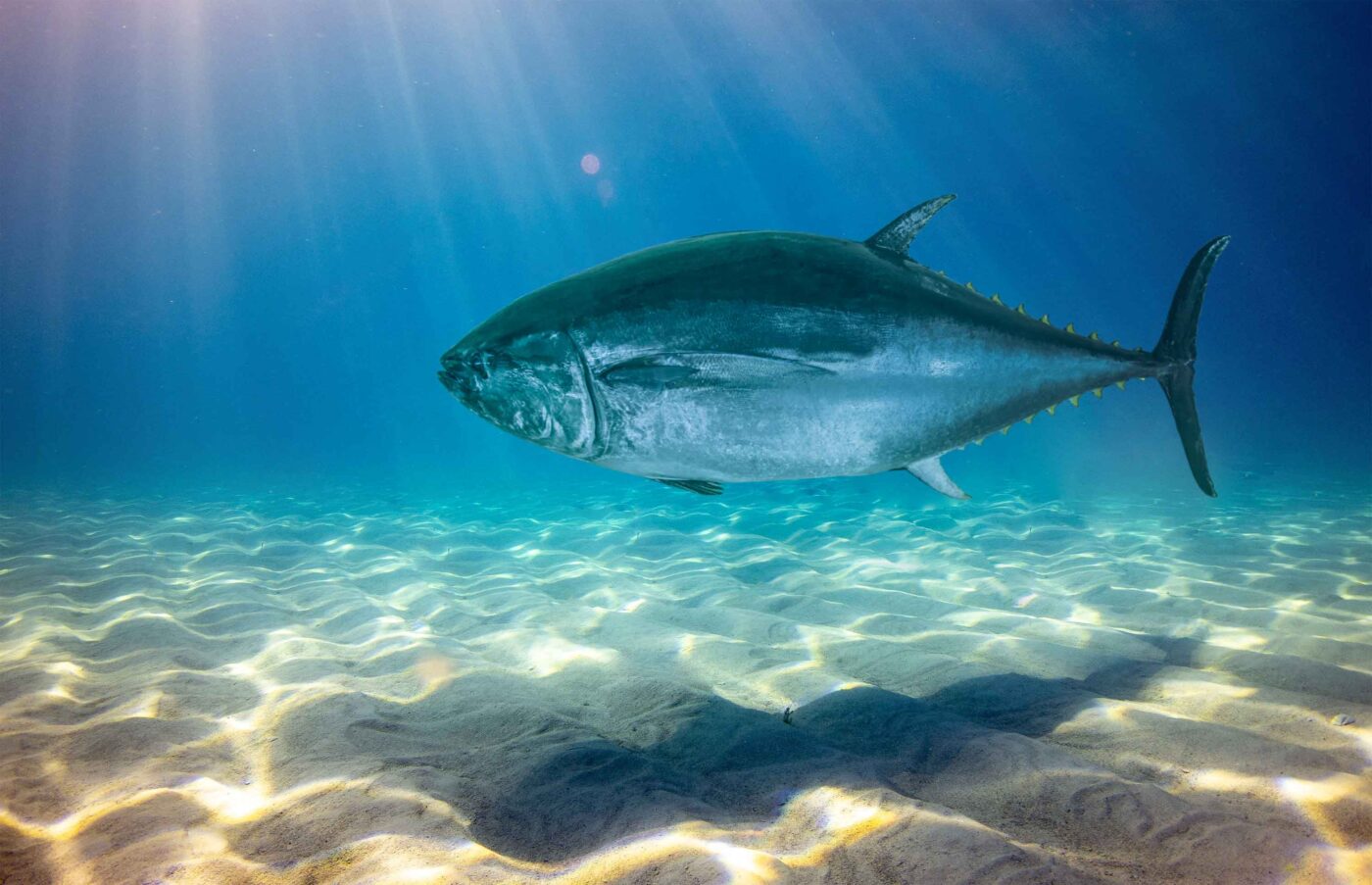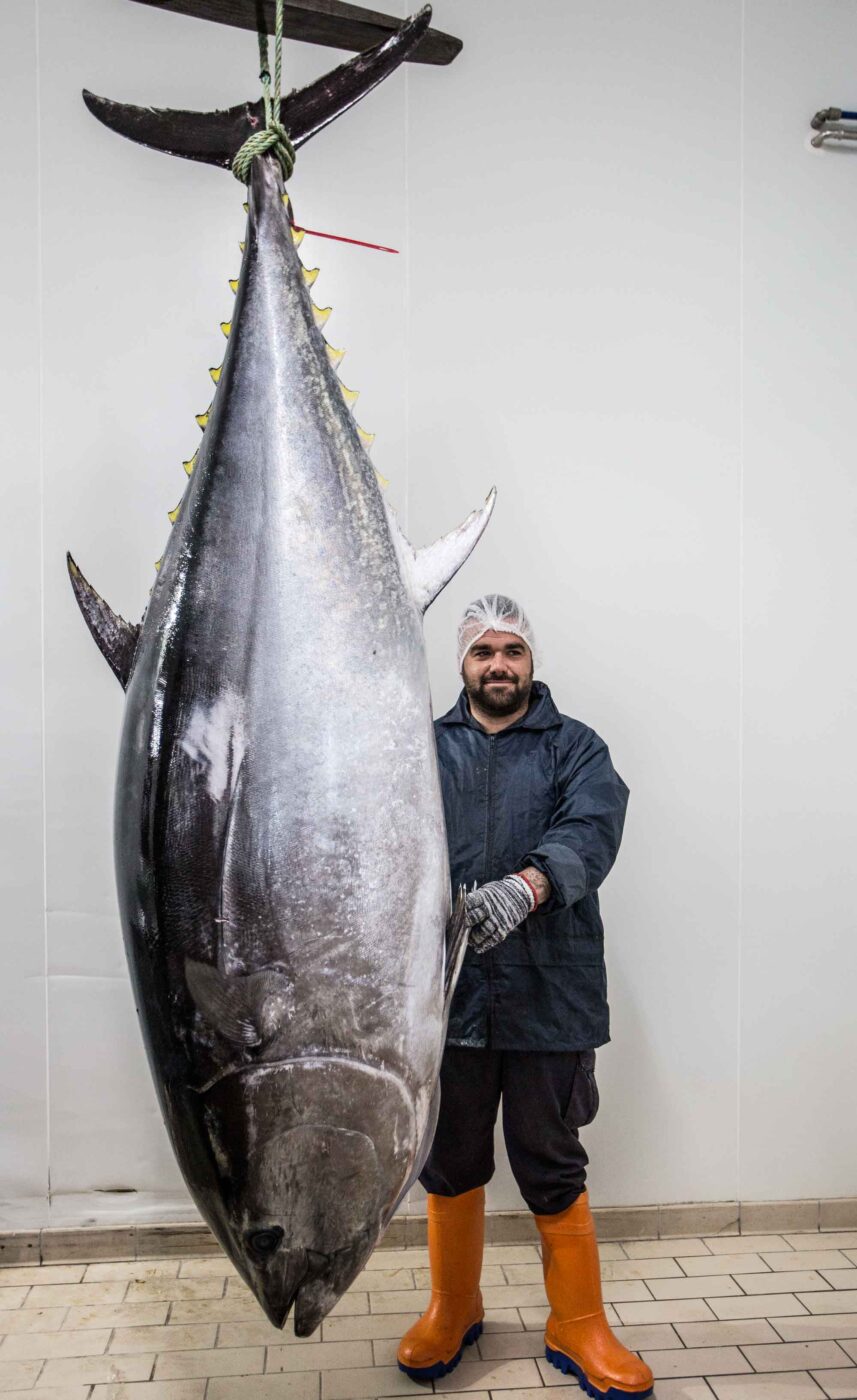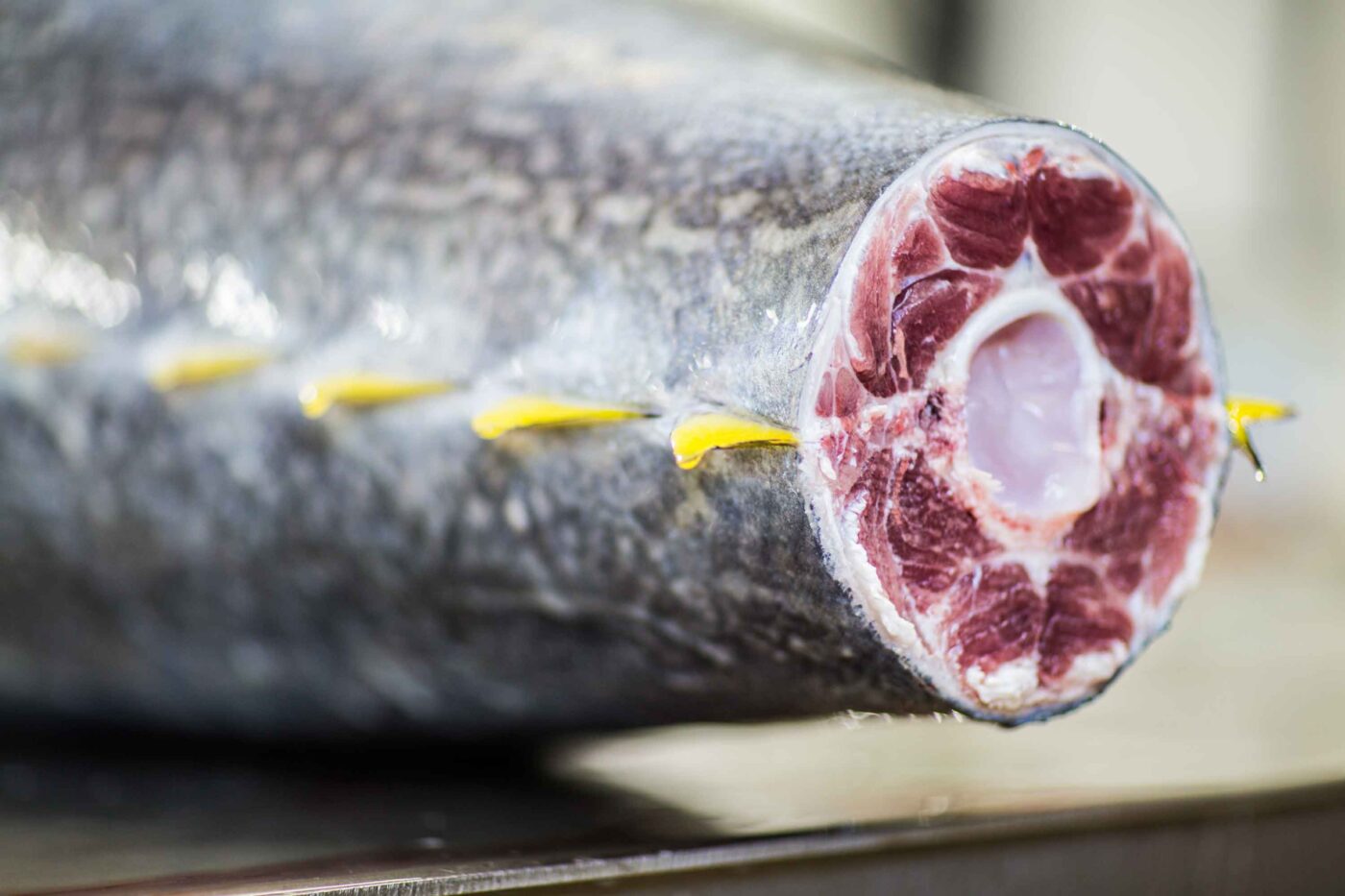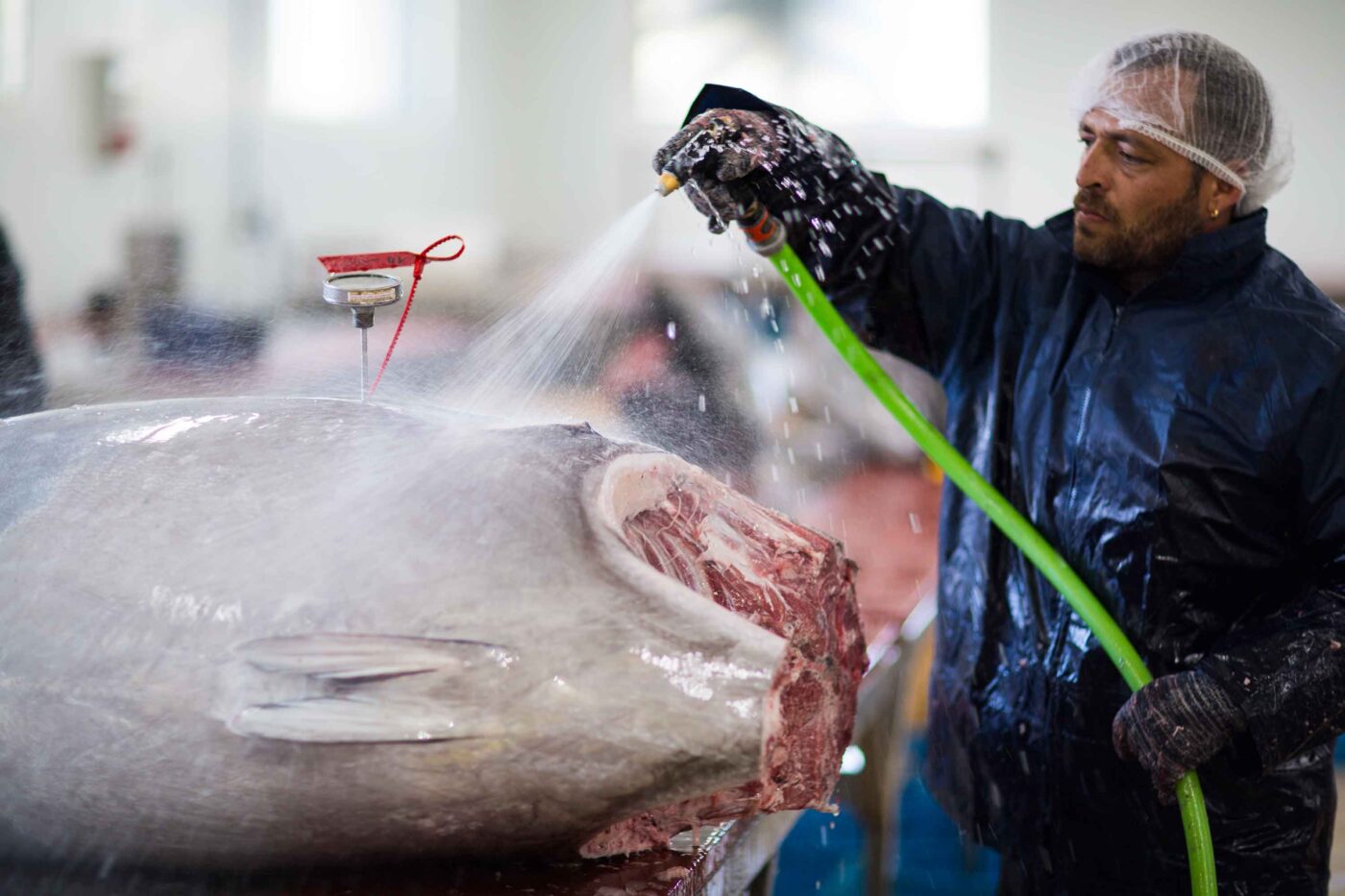One of a species: don’t mix your bigeye up with your bluefin
Summary:

A logbook by Sensei Hiroshi Umi.
On my travels to destinations, markets, restaurants and coastal or marine landscapes, I have learned to identify the different varieties of tuna. And I can attest that tuna tricksters, con artists or simply the ignorant can be found in all climes. Because on occasion, just as in Spain some sellers will try to swap cow for ox, people have tried to pass me off with a bigeye tuna from the Canaries as if it were bluefin from Cartagena; or a restaurateur lacking in knowledge has tried to tell me that the bullet tuna is a succulent member of the Thunnus genus, when it is quite clearly of the Scombridae family.
Let us clarify some concepts, step by step: true tuna are Scombridae, but not all Scombridae are true tuna. Both our beloved bluefin and the clients of the Fuentes brand deserve a sound and detailed explanation. Today we will look at the species, and sometime in the future will turn to the waters where these living torpedoes swim…
Tuna families and species
The Scombridae (which Latin etymology and Linnaean taxonomy define by reference to the “scomber“, or mackerel) represent a copious group of fish including 15 genera and slightly over 50 species. They are all Perciformes, or Percomorpha, in other words perch-like in form.
The aforementioned family is a large one, including two sub-families, with almost all genera lying within what we might call the Scombridae branch. This contains four tribes: two more primitive, namely the Scombrini (mackerel, chub mackerel) and the Scomberomorini (what is known as Spanish mackerel), and two more evolved, namely the Sardini (sardines, Atlantic bonito) and lastly our beloved Thunnini, the largest and most succulent of the Scombridae.
This clan is in turn divided into five genera: Allothunnus auxis (bullet tuna), Euthynnus (mackerel tuna), Katsuwonus (skipjack tuna) and Thunnus (true tuna). Of these, those of interest to us would include the yellowfin (Thunnus albacares), the bigeye (Thunnus obesus), the albacore (Thunnus alalunga) and the three species of bluefin tuna which God in turn spread across the oceans in three different species: the Atlantic bluefin (Thunnus thynnus), the Pacific bluefin (Thunnus orientalis) and the Southern bluefin (Thunnus maccoyii).
The first to be mentioned here, however, does not belong to the Thunnus genus, namely the skipjack tuna (Katsuwonus pelamis), which we even eat as a pizza topping. Which means that it is of far from negligible commercial value, being the most widely consumed around the globe in a host of different forms. In my country it is known as katsuo, is dried and smoked, and makes excellent dashi (fish broth); yellowfin (Thunnus albacares) also known as ahi or light-meat tuna, supplies the canning industry, and quite a few people confuse it with its bluefin brother, although it comes nowhere near it for texture, depth, that intense red colour…; the albacore (Thunnus alalunga) lives in intensely cold waters, has pale flesh and is respectfully caught with line or rod.
I arrived in Spain at the time of a huge campaign to promote it. The next on the list answers to the name of bigeye tuna, and is most likely to be fraudulently sold as a bluefin. It swims in tropical and subtropical waters, acquiring the substantial proportions clearly indicated by its scientific name: Thunnus obesus. You will doubtless have eaten hundreds of helpings of sushi which the owner of the eatery has sworn on oath were of the finest bluefin tuna. A deceit that comes about because at the fish market, bigeye is less than half the price of bluefin, and does not match it for taste.
What they have in common…
For the biology students among you, I offer a few notes common to all the tuna species, whatever their culinary quality and market value. Their anatomical characteristics are fascinating (and we will discuss their behaviour another day), and by their tones shall ye know them: the dorsal part of all tunas is a dark blue colour, with greenish stripes on the flanks, and a lighter-coloured belly with silvery iridescence; the head is conical, with small but effective teeth, arranged in rows to catch their favourite snack of mackerel (among other prey); the skin is made up of six layers of interlinked fibres, like the weft of a loom, with a peripheral blood flow which gives them an internal body temperature of up to a snug 20 degrees; many species are half a metre in length by the age of one year, mature at the age of four, and by 13 are longer than seven feet (with between 31 and 66 vertebrae); specimens have been aged at more than 40 years (one for the Guinness Book of Records), weighing more than Godzilla.
King of the sea
One need only consider the auction in early 2021 at which a two hundred kilo bluefin tuna was sold at Tokio’s Toyosu market for “only”, thanks to the pandemic, 165,000 euros;. The first fin starts off tall, and gradually drops in height; the second dorsal and the anal fins are very similar, acute and pointing in opposite directions. They are followed by a great many arrowhead protrusions known as finlets, far more than in other species. They swim faster than Michael Phelps, with a top speed of 30 km/h, thanks to a rugged and torpedo-shaped body. In Japan we have delighted in their taste for centuries, although they became more popular to eat in the 20th century… Over 15 million Japanese consumers account for 400,000 tonnes per year, with some 30 million kilos imported from Mediterraneam.

How many of my countrymen will be unaware that Fuentes keeps them punctually satisfied with 17,000 tonnes per year of the indisputable king of the sea…
Hiroshi Umi


